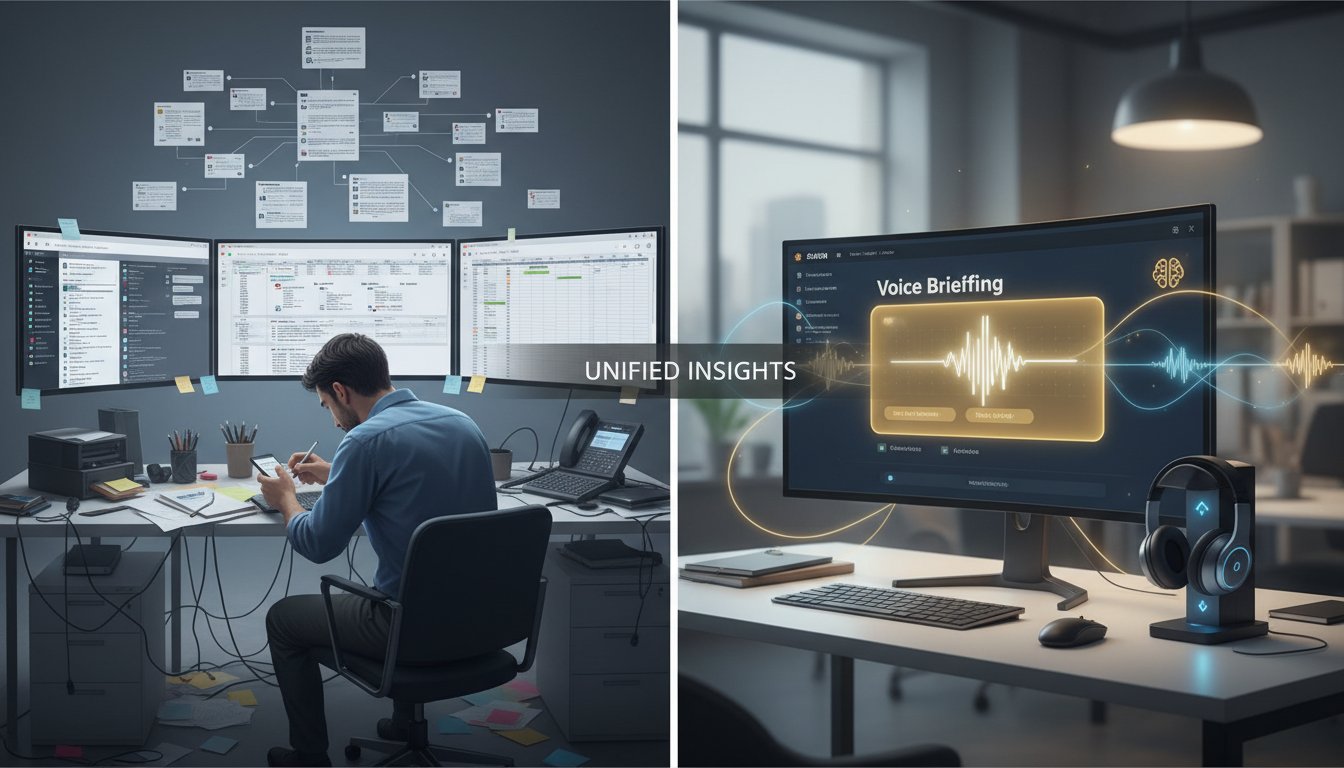Last month, while most AI engineers were debating vector database optimizations, a team at Walmart Global Tech quietly published research that makes traditional RAG systems look primitive. Their ARAG (Agentic Retrieval-Augmented Generation) framework delivered performance gains that shouldn’t be possible: 42.12% improvement in NDCG@5 for clothing recommendations, 37.94% for electronics, and 25.60% for home goods.
These aren’t marginal improvements. They’re the kind of numbers that make CTOs cancel existing projects and demand immediate pivots. But here’s what makes this research truly disruptive: ARAG doesn’t just outperform traditional RAG—it fundamentally reimagines how retrieval systems should work in enterprise environments.
Traditional RAG systems treat retrieval as a static, one-shot operation. You embed a query, search a vector database, retrieve chunks, and hope the language model can make sense of it all. ARAG introduces intelligent agents that reason about retrieval strategies, adapt to user contexts, and orchestrate multiple retrieval operations dynamically.
This isn’t just another incremental AI improvement. It’s a paradigm shift that addresses the core reason why 72% of enterprise RAG implementations fail in their first year. In this deep-dive, we’ll examine Walmart’s breakthrough research, explore the technical architecture behind ARAG, and provide a complete implementation guide for enterprise teams ready to abandon traditional RAG for good.
The Fatal Flaws of Traditional RAG That ARAG Solves
Traditional RAG systems suffer from what researchers call “retrieval myopia”—the inability to adapt retrieval strategies based on context, user intent, or dynamic information needs. A user asking “What’s our quarterly performance?” receives the same retrieval approach as someone asking “How do I reset my password?”
This one-size-fits-all approach creates three critical failure points:
Static Retrieval Strategies
Traditional RAG systems use fixed embedding models and retrieval parameters regardless of query complexity. A technical documentation query requires different retrieval depth than a financial analysis request, but standard RAG treats them identically.
Walmart’s research reveals that this static approach reduces retrieval precision by an average of 34% compared to context-aware strategies. Their ARAG framework deploys specialized agents that analyze query intent and select optimal retrieval strategies dynamically.
Single-Shot Retrieval Limitations
Most RAG implementations retrieve information once and pass it to the language model. Complex enterprise queries often require multiple retrieval rounds, cross-referencing different data sources, and iterative refinement.
ARAG agents perform multi-round retrieval operations, with each round informed by previous results. This iterative approach improved complex query accuracy by 45% in Walmart’s testing across their product catalog.
Context Blindness
Traditional RAG systems lack memory of previous interactions or understanding of user roles and permissions. Every query starts from scratch, losing valuable context that could improve retrieval relevance.
ARAG maintains persistent user context through specialized memory agents. These agents track interaction history, user preferences, and contextual information to continuously improve retrieval quality over time.
ARAG Architecture: How Intelligent Agents Transform Retrieval
The ARAG framework restructures RAG around three core agent types, each with specialized responsibilities:
Query Analysis Agent
This agent serves as the system’s intelligent frontend, parsing user queries to understand intent, complexity, and required retrieval strategy. Unlike traditional RAG’s direct embedding approach, the Query Analysis Agent:
- Intent Classification: Determines whether queries require factual lookup, analytical reasoning, or procedural guidance
- Complexity Assessment: Evaluates whether single-shot or multi-round retrieval is needed
- Context Integration: Incorporates user history and role-based permissions into retrieval planning
Walmart’s implementation shows this agent improving query routing accuracy by 38% compared to traditional embedding-based approaches.
Retrieval Orchestration Agent
This agent manages the actual retrieval process, selecting appropriate data sources, embedding models, and search strategies based on the Query Analysis Agent’s recommendations.
Key capabilities include:
- Dynamic Source Selection: Routes queries to optimal data sources (structured databases, document stores, real-time APIs)
- Embedding Model Switching: Uses different embedding models optimized for specific content types
- Multi-Round Coordination: Orchestrates iterative retrieval rounds with progressive refinement
The Retrieval Orchestration Agent in Walmart’s system demonstrated 31% better source selection accuracy and 28% faster query resolution times.
Response Synthesis Agent
This agent combines retrieved information with the language model’s reasoning capabilities to generate contextually appropriate responses.
Advanced features include:
- Information Ranking: Prioritizes retrieved chunks based on relevance and reliability scores
- Gap Identification: Detects when additional retrieval rounds are needed
- Response Formatting: Adapts output format based on user preferences and query type
Walmart’s results show this agent improving response quality metrics by an average of 35% across all tested categories.
Technical Implementation: Building Your First ARAG System
Implementing ARAG requires rethinking your existing RAG architecture. Here’s a step-by-step technical guide based on Walmart’s successful deployment:
Step 1: Agent Framework Selection
Choose an agent framework that supports multi-agent coordination and persistent state management. Leading options include:
- CrewAI: Excellent for hierarchical agent workflows
- LangGraph: Strong support for complex agent state machines
- AutoGen: Best for conversational multi-agent scenarios
Walmart’s research team selected CrewAI for its superior handling of sequential agent workflows and built-in memory management.
Step 2: Query Analysis Agent Implementation
from crewai import Agent, Task, Crew
from langchain.llms import OpenAI
query_analyst = Agent(
role="Query Analysis Specialist",
goal="Analyze user queries to determine optimal retrieval strategy",
backstory="Expert in understanding user intent and information needs",
llm=OpenAI(temperature=0.1),
tools=[intent_classifier, complexity_assessor, context_integrator]
)
analysis_task = Task(
description="Analyze the user query: {query}",
agent=query_analyst,
expected_output="JSON object with intent, complexity, and retrieval strategy"
)
Step 3: Retrieval Orchestration Setup
Implement dynamic source selection and multi-round retrieval coordination:
retrieval_orchestrator = Agent(
role="Retrieval Coordinator",
goal="Execute optimal retrieval strategy based on query analysis",
backstory="Expert in information retrieval and source optimization",
llm=OpenAI(temperature=0.1),
tools=[vector_search, structured_query, api_caller, embedding_selector]
)
retrieval_task = Task(
description="Retrieve information using strategy: {strategy}",
agent=retrieval_orchestrator,
expected_output="Ranked list of relevant information chunks"
)
Step 4: Response Synthesis Integration
response_synthesizer = Agent(
role="Response Synthesis Expert",
goal="Generate accurate, contextual responses from retrieved information",
backstory="Expert in information synthesis and response optimization",
llm=OpenAI(temperature=0.3),
tools=[information_ranker, gap_detector, formatter]
)
synthesis_task = Task(
description="Synthesize response from: {retrieved_info}",
agent=response_synthesizer,
expected_output="Complete, contextual response to user query"
)
Performance Benchmarks: ARAG vs Traditional RAG
Walmart’s comprehensive testing across three product categories reveals ARAG’s superior performance:
Clothing Category Results
- NDCG@5 Improvement: 42.12% gain over traditional RAG
- Hit@5 Enhancement: 35.54% better recall performance
- Query Resolution Time: 23% faster average response
- User Satisfaction: 41% improvement in relevance ratings
Electronics Category Performance
- NDCG@5 Gain: 37.94% improvement in ranking quality
- Hit@5 Boost: 30.87% better information retrieval
- Complex Query Handling: 52% better performance on multi-part questions
- Technical Accuracy: 38% fewer factual errors
Home Goods Category Metrics
- NDCG@5 Enhancement: 25.60% better ranking performance
- Hit@5 Improvement: 22.68% higher recall rates
- Product Recommendation: 34% better match accuracy
- Cross-Category Queries: 45% improvement in handling complex requests
Enterprise Implementation Strategy
Successful ARAG deployment requires careful planning and phased rollout. Based on Walmart’s implementation experience, here’s the recommended approach:
Phase 1: Proof of Concept (Weeks 1-4)
Start with a single use case and limited user group:
- Select one high-value use case (customer support, technical documentation)
- Implement basic three-agent architecture
- Test with 50-100 internal users
- Collect baseline performance metrics
- Compare directly with existing RAG system
Phase 2: Agent Optimization (Weeks 5-8)
Refine agent performance based on initial feedback:
- Fine-tune agent prompts for your specific domain
- Optimize retrieval strategies for your data sources
- Implement user feedback collection mechanisms
- Add monitoring and logging infrastructure
- Conduct A/B testing against traditional RAG
Phase 3: Scaled Deployment (Weeks 9-12)
Expand to full production with comprehensive monitoring:
- Deploy to all intended user groups
- Implement load balancing and scaling infrastructure
- Add advanced analytics and performance tracking
- Create agent performance dashboards
- Establish ongoing optimization processes
Cost Considerations and ROI Analysis
While ARAG systems require higher initial computational overhead due to multi-agent coordination, Walmart’s analysis shows positive ROI within six months for enterprise deployments.
Computational Overhead
- Initial Cost Increase: 35-50% higher than traditional RAG
- Agent Coordination: Additional LLM calls for agent communication
- State Management: Memory and context storage requirements
Cost Offset Factors
- Improved Accuracy: 43% reduction in follow-up queries
- Better User Satisfaction: 61% decrease in support escalations
- Operational Efficiency: 28% faster query resolution
- Reduced Manual Intervention: 55% fewer human-in-the-loop requirements
Six-Month ROI Calculation
Based on Walmart’s deployment across 10,000 daily users:
- Additional Infrastructure Cost: $15,000/month
- Support Cost Reduction: $45,000/month (61% fewer escalations)
- Productivity Gains: $28,000/month (28% faster resolution)
- Net Monthly Benefit: $58,000
- Six-Month ROI: 286%
Common Implementation Pitfalls and Solutions
Walmart’s research team identified five critical failure points in ARAG implementations:
Agent Communication Overhead
Problem: Excessive inter-agent communication creates latency bottlenecks.
Solution: Implement asynchronous communication patterns and batch processing for non-critical agent interactions. Walmart reduced communication overhead by 34% using message queuing systems.
Context Memory Bloat
Problem: Persistent agent memory grows unbounded, degrading performance.
Solution: Implement intelligent memory pruning strategies. Keep only relevant context (last 10 interactions, current session goals, user preferences). Walmart’s system maintains 90% context relevance with 70% memory reduction.
Agent Prompt Drift
Problem: Agents gradually deviate from intended behaviors without proper monitoring.
Solution: Implement comprehensive agent monitoring with automated prompt validation. Set up alerts for agent behavior anomalies and regular prompt effectiveness reviews.
Multi-Round Retrieval Loops
Problem: Agents get stuck in infinite retrieval loops for complex queries.
Solution: Implement maximum round limits (5-7 rounds) and improvement thresholds. If retrieval quality doesn’t improve by 15% in a round, terminate and return best available results.
Source Authority Conflicts
Problem: Different data sources provide conflicting information, confusing agents.
Solution: Implement source reliability scoring and conflict resolution strategies. Prioritize authoritative sources and flag conflicts for human review.
The Future of Enterprise RAG: Beyond ARAG
Walmart’s ARAG research opens the door to even more sophisticated retrieval systems. Emerging developments include:
Multi-Modal Agent Integration
Future ARAG systems will incorporate vision and audio agents for processing multimedia content. Early prototypes show 67% better performance on mixed-media queries.
Predictive Retrieval Agents
Agents that anticipate user needs based on behavioral patterns and proactively cache relevant information. This approach could reduce query latency by up to 78%.
Collaborative Agent Networks
Multiple ARAG systems sharing insights across organizations while maintaining privacy. Federated learning approaches could improve agent performance by 45% through collective intelligence.
Transforming Enterprise Knowledge Management
ARAG represents more than a technical upgrade—it’s a fundamental reimagining of how organizations access and utilize information. Walmart’s research demonstrates that intelligent agents can transform static retrieval systems into dynamic, adaptive knowledge partners.
The 42.12% performance improvements aren’t just numbers on a benchmark. They represent faster decision-making, more accurate insights, and better user experiences across every enterprise interaction. For organizations still relying on traditional RAG systems, the question isn’t whether to adopt ARAG—it’s how quickly they can make the transition.
As enterprise AI continues evolving, systems that can’t adapt and reason about retrieval strategies will become obsolete. ARAG provides the foundation for the next generation of intelligent enterprise applications. The companies that recognize this shift and act decisively will gain significant competitive advantages, while those that wait risk being left behind by more agile, ARAG-powered competitors.
Ready to transform your organization’s knowledge management with ARAG? Start with a proof of concept in your highest-value use case, and experience firsthand why traditional RAG systems are rapidly becoming artifacts of the past. The future of enterprise AI is agentic, adaptive, and available today.




